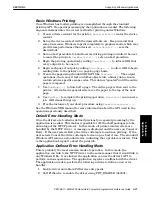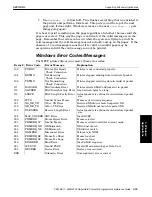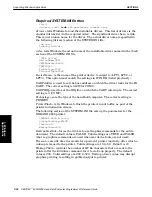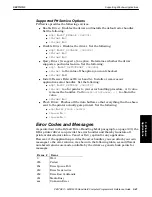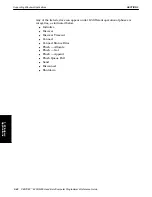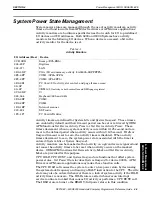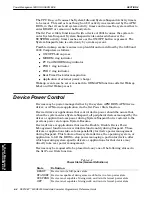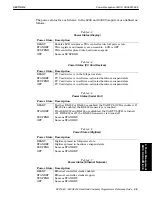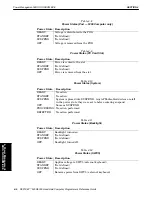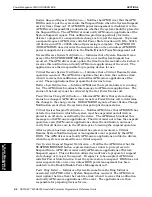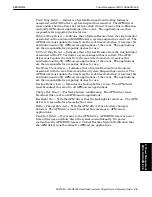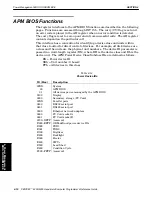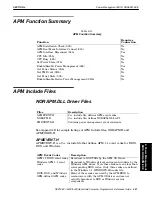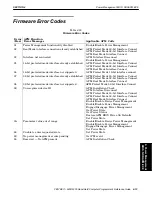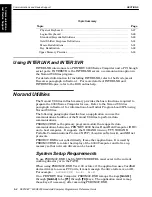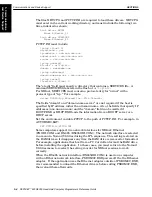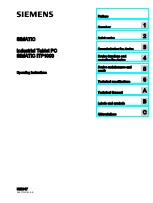
SECTION 4
Power Management BIOS: NORAPM.EXE
PEN*KEY
R
6200/6300 Hand-Held Computer Programmer’s Reference Guide 4-3
System Power State Management
System power states are managed through the use of activity monitors, activity
timers, and function calls from APM device drivers or APMĆaware applications.
Activity monitors are hardwareĆspecific devices that watch for I/O to predefined
I/O devices and I/O addresses. Both 6200 and 6300 Systems have activity
monitors for the following I/O devices. When a device is accessed, a bit in the
activity monitor for the device is set.
Table 4Ć1
Activity Monitors
I/O Address (Hex) Device
0CE, 0ED
Scamp (ECh,EDh)
208ć20F
Digitizer
360ć377
LAN
3B0ć3DF
VGA (I/O and memory activity (0A0000hć0BFFFFFh)
3F8ć3FF
COM1 (3F8hć3FFh)
2F8ć2FF
COM2 (2F8ć2FFh)
3E0ć3E1
PC Card (I/O activity, slot control, and page frame access)
00ć0F
80ć8F
0C0ć0DF
DMA (
I/O activity to both controller and DMA page registers
)
060, 064
Keyboard (60h and 64h)
3E8ć3EF
COM3
2E8ć2EF
COM4
1E8ć1EF
Internal scanner
220ć224
SST radio
1F0ć1F7
PC Card ATA drive
Activity timers are defined for
System Idle
and
System Suspend
. These timers
are enabled by default and their timeout period can be set or retrieved by OEM
APM functions
Set Device Activity Timer
or
Get Device Activity Timer
. These
timers decrement when no system activity occurs within 0.125 second and are
reset to the defined period when activity occurs within 0.125 second. If
Idle
or
Suspend
timeout is set to zero, the activity timer is disabled. When activity
timers decrement to zero, the system power state associated with the timer is
entered (
System Idle
or
System Suspend
).
Activity monitors can be masked so that activity on a given device is ignored and
not cause the activity timers to be reset when activity occurs on the masked
device. OEM APM functions
Set Device Activity Mask
and
Get Device Activity
Mask
are provided for this purpose.
CPU IDLE
,
CPU BUSY
, and
System Suspend
are functions that affect system
power states.
Set Power State
invokes
System Suspend
for device 0001h. APM
Drivers or APMĆaware applications may make these function calls.
The
CPU IDLE
call causes the system to enter a lowĆpower state by decreasing
the system clock frequency and issuing a HALT instruction to the CPU. The idle
state may also be entered whenever there is a lack of system activity if the IDLE
activity timer is nonzero. The IDLE state is exited whenever an interrupt
service routine is invoked that causes I/O activity or performs a CPU BUSY call.
The IDLE state returns to the READY (full power state) in this condition.
4. Power Management
BIOS: NORAPM.EXE

